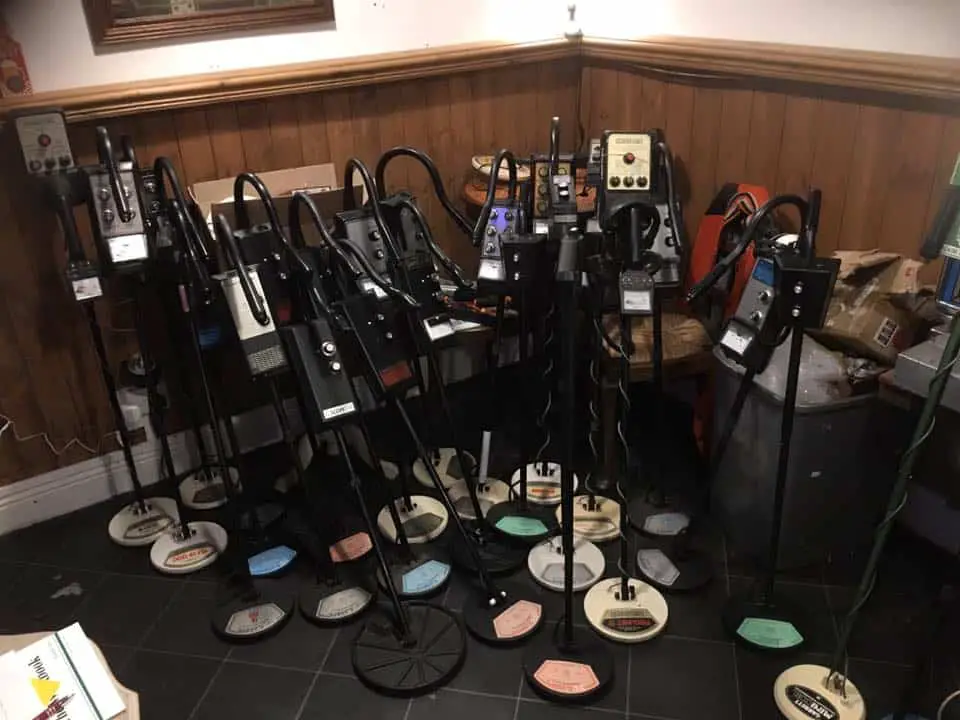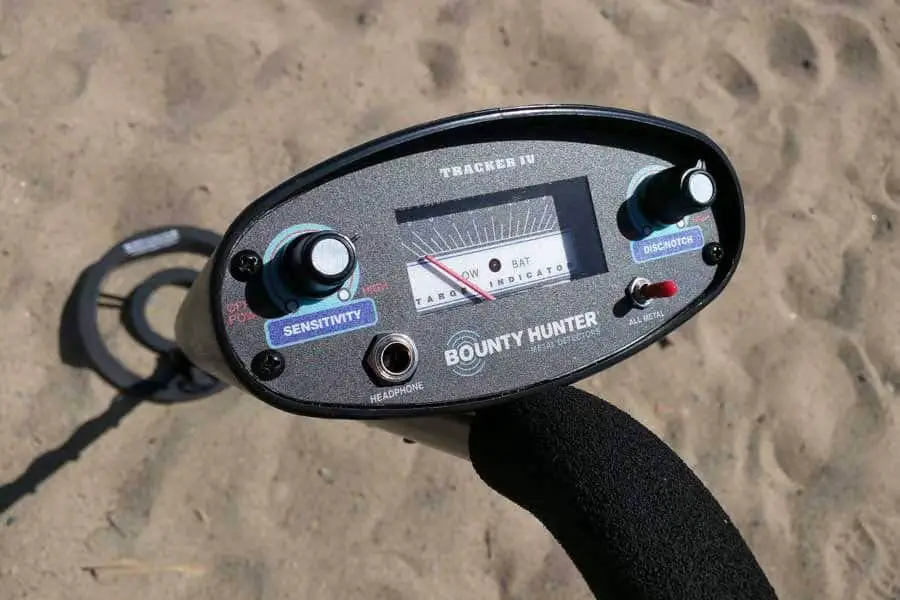
One of the mistakes I did at the beginning is when I didn’t really try to understand some details about metal detectors. Because of that I wasn’t, in many occasions, able to choose the right machine or to use it properly. Once I was aware of this mistake, I’ve started asking and wondering all possible questions!
One of them is the difference between motion and non-motion detectors … You are probably wondering the same thing right now. That’s why I’ve decided to put together this short post to share what I know and answer your question …
… So, what is the difference between motion and non-motion metal detectors? The main difference is that motion metal detectors require swinging the coil so you can register a signal. Thus, you will get closer to your target and eventually find it. Instead, non-motion metal detectors were not designed to be moving to register a signal. They only require being close enough to the target.
In this post, I am going to illustrate more differences between the two types of machines. So you will have a better understanding …
… I will also provide you with some relevant examples on each kind of machine. Plus an example of a machine that can operate on both modes.
More Differences you should be aware of …
At the end of the day, whether you are using a motion or non-motion machine the purpose remains the same … Finding valuable metallic targets by generating an electromagnetic field that the target should react to.
The difference is how you should proceed to get the job done!
Historically, non-motion detectors were released for the general public in the 70s. On the other hand, motion devices were launched 10 or 15 years later.
Those, who ask which one is better, there is really no accurate answer to that. Both of them are complementary and each one work best under specific circumstances. That’s why most recent devices have both modes on them that you can use according to the situation.
If you are using a pinpointer, for example, that falls into the non-motion category; you need to get close to the target to receive the signal. You may lose it depending on many things such as the ground conditions. Yet, by adjusting and tuning it you should re-gain the initial signal until you get closer and actually find your target.
Now, if you are using a motion metal detector there is no need to tune it. However, you need to swing the coil to find your target. That is to say you have to make movements right over your target so you can find it. If you hang your machine with no movement above the find, it just won’t be able to see it.
These days, there are rarely metal detectors that are only non-motion unless if you are talking about a pinpointer!
It is undeniable that motion machines are the ones that will bring the best possible performances. It is also easier to use comparing to non-motion detector when you hang quietly above the object. The latter does, however, consume more energy. Today, the non-motion part comes only as a complement, whether as a separate machine (pinpointer) or as an additional feature in your actual detector.
In most today’s machines there is a ‘pinpoint button’. When you press it you will completely change the mode from motion to non-motion, like if you are using a straight pinponter. This little button is useful once a target is almost detected, and you try to have a much accurate localization of your find.
Example of a Motion Metal Detector (Bounty Hunter TK4)

The Bounty Hunter TK4 (You can Check it Here at Amazon!) is a good example of a motion detector. It can surprisingly operate well in stiff ground conditions comparing to its low price. Its operating frequency is around 6.7 kHz.
This machine is bought pretty often by those who have just started out with this hobby! Indeed, it is a good entry with no significant learning curve.
It is also used, usually, by those who want to do some work underground. Actually, it makes it much easier for you to detect cables, water lines and septic tank underground.
Finding Property stakes is also a common usage of this machine. This doesn’t mean that you can’t find other valuable finds like relics, coins … it actually does a fine job localizing them.
Following the manual that comes with the product is easy and pretty straightforward!
It is pretty light, and you can adjust its extent so it could fit your preferences!
Example of a non-Motion Metal Detector (Garrett Pro-Pointer AT)

Garrett Pro-Pointer AT (You can Check it Here at Amazon!) is a perfect example of a non-motion metal detector. It is tremendously useful to localize your target accurately even in soaked or muddy ground. In fact, it is waterproof up to 3 meters and you can still visualize underwater it because of its shiny color.
So, if you’ve ever wanted to practice underwater metal detecting, this device would definitely be a helpful asset. This also remains valid in beach and rivers.
This version has on it a much better sensitivity then the previous ones, by being able to localize much smaller targets. It has also the capability to operate on a better depth.
According to several hobbyists who have used detectors with and without a pinpointer like this. They confirm that without it, chances are, you will spend twice more effort in non-necessary digging and target chasing than doing it with such a pointing device.
That’s why, it is not really something that you should take for granted in my opinion.
For more information about non-motion detector check these articles:
- Pinpointer examples for the Beach
- Examples of Waterproof Pinpointers
- Examples of Saltwater Pinpointers
Example of a machine that can be Motion & non-Motion (Equinox 800)

I had a hard time to pick what would be perfect example for you in this case. I wanted to choose something without a challenging learning curve. Finally, I couldn’t come up with a better instrument than the Minelab Equinox 800 (Have a Look at it Here at Amazon!).
At any time you can switch the mode from motion to non-motion and vice-versa depending on the situation.
It is a multi-frequency metal detector, that can also operate on mono-frequency it you are confident about the size of your target. It has several modes that you can choose from depending on the nature of the expected metal.
If you don’t know what a multi-frequency mode is. Indeed, it is the fact that your detector can operate at the same time on several frequencies. In this case, you can operate on up to 5 frequencies simultaneously.
If you are seeking for coins and relics a low frequency around 5 kHz should get the job done. However, for other targets such as platinum or gold you want to aim for much bigger ones.
Obviously, it is fully waterproof up to 3 meters, totally adapted for soaked grounds, rainy and even snowy weather/ground.
The tones are somewhat strong and clear to the point that after few uses you will be able to identify what you’ve found only by recognizing the tone you are hearing.
If you are living in or close to a gold hotspot, then here you go! Equinox 800 has 2 gold hunting modes that you can use separately or at the same time. The first one operates on 20 kHz and the second one on 40 kHz.
You can opt of the latter if you are dealing with a highly mineralized soil and/or very small gold nuggets.
If you are already knowledgeable about other machines, keep in mind that this one (Minelab equinox 800) is much better (at least in my opinion) than AT Pro. Even if the latter is one of the most popular machines out there …
Conclusion
I really hope that all these explanations and examples I provided you with have helped you to get your questions fully answered.
I am glad you are asking these kinds of questions … I’ve asked them also before. It is, actually, a sign that you have a big urge to know and understand more about this hobby even when it comes to the small details.
I would like to hear from you, if you don’t mind! After reading this post, are you willing to invest in a motion detector or in a non-motion one or both? If so, why did you make this choice? Let me know in the comment section below so other hobbyists would probably be inspired …
… Finally, for more helpful information about these kind of topic! You should definitely have a look at these differences between normal Detectors and Gold Detectors … You will learn a ton of valuable info!
